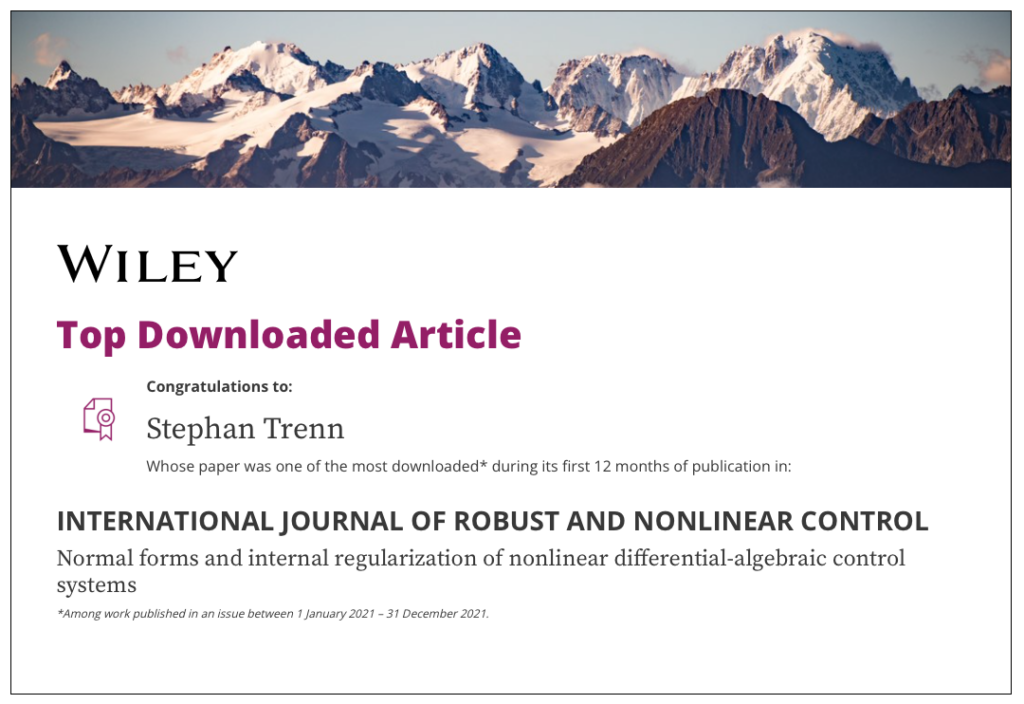Our paper
Karimi-Pour, Atiyeh; Trenn, Stephan; Ayati, Moosa; Zakerzadeh, Mohammad Reza Funnel-based output tracking control for nonlinear impulsive switched systems Journal Article In: Nonlinear Analysis: Hybrid Systems, vol. 60, no. 101661, pp. 1-25, 2025, (open access). @article{KariTren25,We study output tracking for nonlinear impulsive switched systems with global relative degree one under prescribed performance requirements. Classical funnel control is not directly applicable in this setting, since output jumps can cause violations of funnel constraints. To address this, we design an adjusted funnel boundary that contracts prior to jumps and expands afterward, computed offline based on the stability of the internal dynamics and bounded jump maps. We also derive sufficient conditions ensuring bounded control input. To obtain tighter bounds, practical ISS is employed in place of BIBO stability, yielding smaller input requirements. Additional refinements include asymmetric jump bounds, level-set adjustments, and real-time funnel adaptation, which further improve performance. Numerical examples confirm stability and practical tracking under disturbance impulses and switching. |
Karimi-Pour, Atiyeh; Trenn, Stephan Funnel control for impulsive switched systems Proceedings Article In: Proc. 63rd IEEE Conf. Decision Control (CDC 2024), pp. 7810-7815, IEEE Milan, Italy, 2024. @inproceedings{KariTren24,Impulsive switched systems encompass various modes, each exhibiting distinct behaviours. Typically, a switching sequence orchestrates transitions between these modes, where state jumps may occur, potentially undermining output tracking performance or system stability. This work introduces a funnel controller tailored for relative degree one nonlinear impulsive switched systems. Notably, this controller operates solely based on system output without necessitating knowledge of system dynamics. Unlike classical funnel controllers with fixed boundaries, the proposed method dynamically adjusts the funnel boundary for each approaching jump, aiming to preserve adherence to the original boundary. No precise knowledge of jump instances or maps is required; approximate jump intervals and an upper bound for maximum jump height suffice. Theoretical analysis establishes that the error remains within the funnel, facilitating successful reference signal tracking. Performance validation is demonstrated via numerical simulation. |


